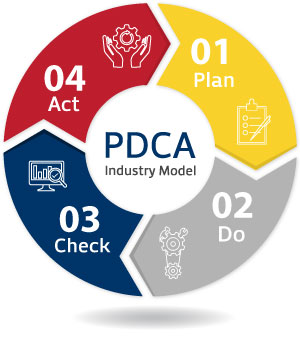Applying Business Assurance to your Business
Starting with the dictionary definition, assurance refers to:
assurance noun
[countable] a statement that something will certainly be true or will certainly happen, particularly when there has been doubt about it
(resource: https://www.oxfordlearnersdictionaries.com/definition/english/assurance)
By associating “assurance” with business, Business Assurance appears as a solution that allows organisations to adequately address challenges and manage their systems and risks, improving the current and future performance of their business. Business assurance is about providing organizations an increased confidence in their controlled environment, with improved efficiency of their business processes, while assuring that they’re in control.
However, these terms can be very abstract, and most of the time companies do not have time to figure out how to do it, and how to rapidly increase their profit, reduce waste and improve their efficiency. Shortly explaining and with simple words, what a company needs is to assure its processes effectiveness, and to achieve it, the company must monitor and analyse its processes and then periodically redesign and enhance them. We call this process Continuous Improvement.
Globalisation has affected industry (all sectors) around the world, making the market much more competitive, as supply-chains are developing and demand is more challenging, and the success of a company can change overnight. In order to react, the elimination of waste and the creation of more efficient processes are essential. This can be achieved by implementing a Continuous Improvement approach.
Continuous Improvement allows to consistently strive to improve your processes up to to the highest standards. It has become a necessity to survive and a must to successfully run towards market dominance. The implementation of Continuous Improvement in a company is based on questioning and changing. A company that does not analyse its processes, or that is not able to identify problems or change the way it is being done will rapidly decay.
“Change is vital, improvement the logical form of change.” James Cash Penney
The intellectual capability of a company is more valuable than its tangible assets, and a passive confrontation of the problems can generate lack of discipline, empty projects without goals and a lack of knowledge of the processes.
Left alone, the effectiveness of a process can diminish over time, and, as no process is perfect, there’s always room to improve, being fundamental to implement changes, that will also make tasks easier, saving time and money. The benefits of continuous improvement are simple: it allows to constantly improve practices and make your team and business more efficient, accurate, and effective.
Other Concepts Associated
Associated to Continuous Improvement there are concepts such as Kaizen, Lean, Six Sigma or DMAIC. On this article, they will not be explained, in order to avoid any confusion and an article too dense in information, but these are mentioned once they all are methodologies associated to Continuous Improvement and based on similar principles and forms, reinforcing the primary goals apply changes to reduce waste and redesign processes.
Also associated with Continuous Improvement is the PDCA cycle or the Deming Cycle.

Fig. 1 – William Edwards Deming
The Plan-Do-Check-Act (PDCA) Cycle
The model Plan-Do-Check-Act is the most popular scientific approach to achieve continuous improvement. It was founded by the American Engineer William Edwards Deming and it is a never-ending cycle that helps companies to improve their processes based on achieved results. The cycle has four main phases: Plan, Do, Check and Act.
Plan: Define what must be done, and who should do it. For this phase it may be necessary to make a research, organize information, in a way that one can have an overall view of the processes.
Do: After a well-organized plan is established, the actions defined must be put in practice. It is important that the people involved should know what are their tasks/responsibilities and how to do it.
Check: It is imperative to, always check a process. Evaluate if the execution was made accordingly to the plan. First it must be monitored and then analysed.
Monitor consists on collect all the data and comparing with what was previewed on the plan, and analyse is based on the process reading, getting it in detail to understand what caused the errors and fails.
For this phase, it is always very helpful to rely on a monitoring system, which collects and analyses Big Data.
Act: This is the moment where the corrections will be made taking into consideration the analyses made before.

When a cycle ends, a new one begins: as mentioned before, Continuous Improvement is a never-ending approach that is always looking for Improvement and Evolution of the processes.
A Data Collection System
As mentioned over the article, monitoring is fundamental to redesign and evolve the processes, and sometimes companies struggle on this step because there is too much Raw Data (Big Data) to monitor and to analyse. In the market there are systems that allow companies to treat data in real time, making it relevant. This allows top management to control its processes and also make the right decisions at the right time.
TecnoVeritas has developed BOEM-S, a cloud-based system that treats data, based on KPIs (Key Performance Indicators) and artificial intelligence. By defining relevant KPIs, BOEM-S has the capacity to make all the relevant data available anytime and anywhere, on your phone, tablet or computer. The only requirement is to have internet access.
In this way, regardless if one is the CEO or a technical manager one can access customised and relevant information, monitoring all your processes and analysing it, without stress or losing time and money.
Overall, the system allows you to continuously improve your processes, helping you to implement the PDCA cycle, making your business evolve, and assuring that proper actions are being made, increasing efficiency, profits and developing a more productive and pleased team. BOEM-S: making work much easier and Assuring your Business.



